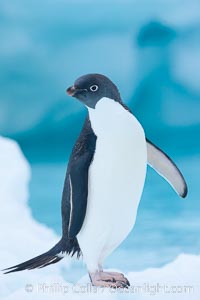
Adelie penguins.
Species: Adelie penguin, Pygoscelis adeliae
Location: Brown Bluff, Antarctic Peninsula, Antarctica
Image ID: 26379
Species: Adelie penguin, Pygoscelis adeliae
Location: Brown Bluff, Antarctic Peninsula, Antarctica
Image ID: 26379
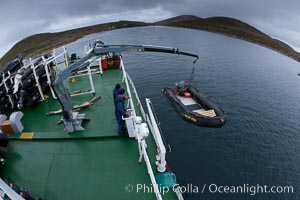
Zodiac boats, are lowered into the ocean from the ship M/V Polar Star in preparation for a day exploring New Island in the Falklands.
Location: New Island, Falkland Islands, United Kingdom
Image ID: 23708
Location: New Island, Falkland Islands, United Kingdom
Image ID: 23708
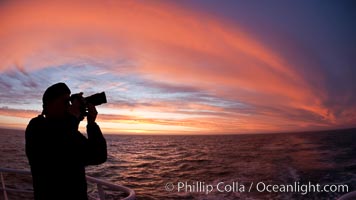
Photographer takes picture of a spectacular sunset arch, spanning the heavens from horizon to horizon, over the open sea between the Falkland Islands and South Georgia Island.
Location: Southern Ocean
Image ID: 24096
Location: Southern Ocean
Image ID: 24096
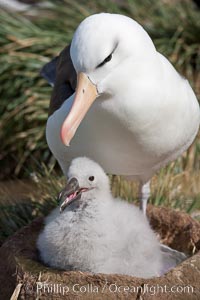
Black-browed albatross, adult and chick, at the enormous colony on Steeple Jason Island in the Falklands. This is the largest breeding colony of black-browed albatrosses in the world, numbering in the hundreds of thousands of breeding pairs. The albatrosses lay eggs in September and October, and tend a single chick that will fledge in about 120 days.
Species: Black-browed albatross, Thalassarche melanophrys
Location: Steeple Jason Island, Falkland Islands, United Kingdom
Image ID: 24120
Species: Black-browed albatross, Thalassarche melanophrys
Location: Steeple Jason Island, Falkland Islands, United Kingdom
Image ID: 24120
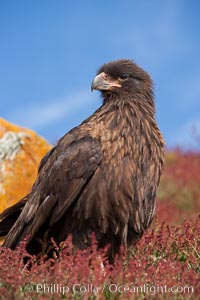
Straited caracara, a bird of prey found throughout the Falkland Islands. The striated caracara is an opportunistic feeder, often scavenging for carrion but also known to attack weak or injured birds.
Species: Striated caracara, Phalcoboenus australis
Location: Steeple Jason Island, Falkland Islands, United Kingdom
Image ID: 24125
Species: Striated caracara, Phalcoboenus australis
Location: Steeple Jason Island, Falkland Islands, United Kingdom
Image ID: 24125
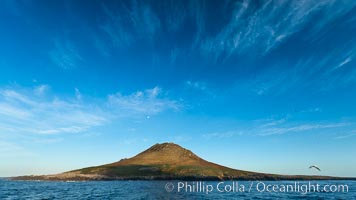
Steeple Jason Island at sunrise, one of the remote Jason Group of Islands in the West Falklands. Uninhabited, the island is spectacular both for its rugged scenery and its enormous breeding colony of black-browed albatross. Steeple Jason Island is now owned and administered by the Wildlife Conservation Society.
Location: Steeple Jason Island, Falkland Islands, United Kingdom
Image ID: 24131
Location: Steeple Jason Island, Falkland Islands, United Kingdom
Image ID: 24131
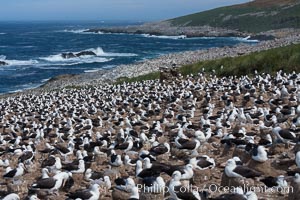
Black-browed albatross colony on Steeple Jason Island in the Falklands. This is the largest breeding colony of black-browed albatrosses in the world, numbering in the hundreds of thousands of breeding pairs. The albatrosses lay eggs in September and October, and tend a single chick that will fledge in about 120 days.
Species: Black-browed albatross, Thalassarche melanophrys
Location: Steeple Jason Island, Falkland Islands, United Kingdom
Image ID: 24258
Species: Black-browed albatross, Thalassarche melanophrys
Location: Steeple Jason Island, Falkland Islands, United Kingdom
Image ID: 24258
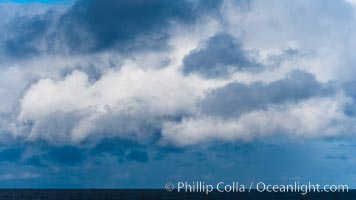
Clouds, weather and light mix in neverending forms over the open ocean of Scotia Sea, in the Southern Ocean.
Location: Scotia Sea, Southern Ocean
Image ID: 24760
Location: Scotia Sea, Southern Ocean
Image ID: 24760
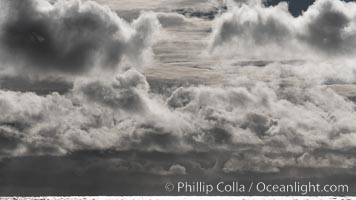
Clouds, weather and light mix in neverending forms over the open ocean of Scotia Sea, in the Southern Ocean.
Location: Scotia Sea, Southern Ocean
Image ID: 24761
Location: Scotia Sea, Southern Ocean
Image ID: 24761
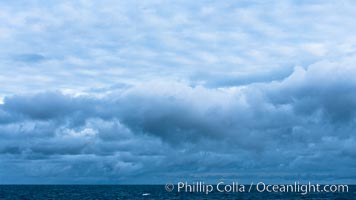
Clouds, weather and light mix in neverending forms over the open ocean of Scotia Sea, in the Southern Ocean.
Location: Scotia Sea, Southern Ocean
Image ID: 24762
Location: Scotia Sea, Southern Ocean
Image ID: 24762
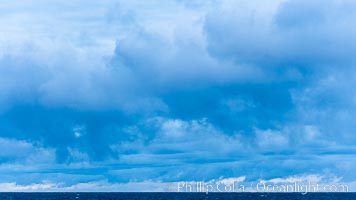
Clouds, weather and light mix in neverending forms over the open ocean of Scotia Sea, in the Southern Ocean.
Location: Scotia Sea, Southern Ocean
Image ID: 24763
Location: Scotia Sea, Southern Ocean
Image ID: 24763
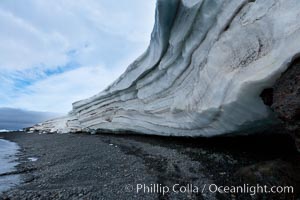
Horizontal striations and layers in packed snow, melting and overhanging, seen from the edge of the snowpack, along a rocky beach.
Location: Brown Bluff, Antarctic Peninsula, Antarctica
Image ID: 24782
Location: Brown Bluff, Antarctic Peninsula, Antarctica
Image ID: 24782
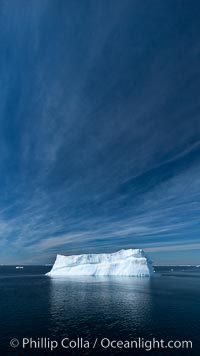
Iceberg, clouds and sky, Antarctica.
Location: Antarctic Sound, Antarctic Peninsula, Antarctica
Image ID: 24785
Location: Antarctic Sound, Antarctic Peninsula, Antarctica
Image ID: 24785
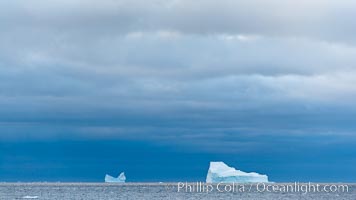
Iceberg, ocean, light and clouds. Light plays over icebergs and the ocean near Coronation Island.
Location: Coronation Island, South Orkney Islands, Southern Ocean
Image ID: 24797
Location: Coronation Island, South Orkney Islands, Southern Ocean
Image ID: 24797
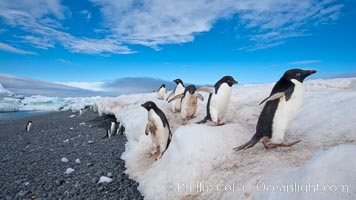
Adelie penguins navigate a steep dropoff, to get from their nests down to a rocky beach, in order to go to sea to forage for food.
Species: Adelie penguin, Pygoscelis adeliae
Location: Paulet Island, Antarctic Peninsula, Antarctica
Image ID: 25020
Species: Adelie penguin, Pygoscelis adeliae
Location: Paulet Island, Antarctic Peninsula, Antarctica
Image ID: 25020
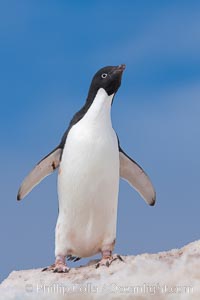
Adelie penguin.
Species: Adelie penguin, Pygoscelis adeliae
Location: Paulet Island, Antarctic Peninsula, Antarctica
Image ID: 25069
Species: Adelie penguin, Pygoscelis adeliae
Location: Paulet Island, Antarctic Peninsula, Antarctica
Image ID: 25069
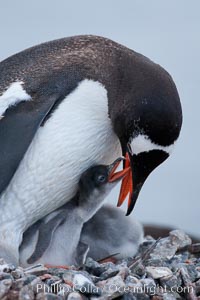
Gentoo penguin tending to its two chicks. The nest is made of small stones.
Species: Gentoo penguin, Pygoscelis papua
Location: Cuverville Island, Antarctic Peninsula, Antarctica
Image ID: 25551
Species: Gentoo penguin, Pygoscelis papua
Location: Cuverville Island, Antarctic Peninsula, Antarctica
Image ID: 25551
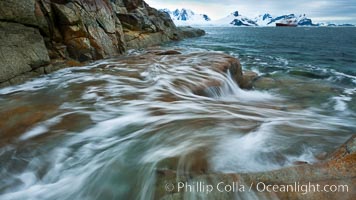
Waves rush in, sunset, Antarctica. Ocean water rushes ashore over the rocky edge of Peterman Island, Antarctica.
Location: Peterman Island, Antarctic Peninsula, Antarctica
Image ID: 25610
Location: Peterman Island, Antarctic Peninsula, Antarctica
Image ID: 25610
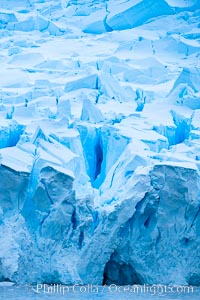
A glacier fractures and cracks, as the leading of a glacier fractures and cracks as it reaches the ocean. The pieces will float away to become icebergs.
Location: Neko Harbor, Antarctic Peninsula, Antarctica
Image ID: 25654
Location: Neko Harbor, Antarctic Peninsula, Antarctica
Image ID: 25654
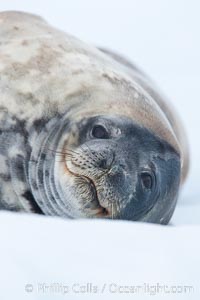
Weddell seal in Antarctica. The Weddell seal reaches sizes of 3m and 600 kg, and feeds on a variety of fish, krill, squid, cephalopods, crustaceans and penguins.
Species: Weddell seal, Leptonychotes weddellii
Location: Neko Harbor, Antarctic Peninsula, Antarctica
Image ID: 25661
Species: Weddell seal, Leptonychotes weddellii
Location: Neko Harbor, Antarctic Peninsula, Antarctica
Image ID: 25661
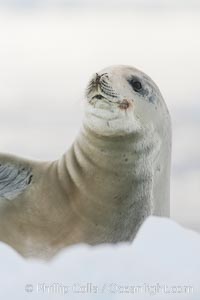
A crabeater seal, hauled out on pack ice to rest. Crabeater seals reach 2m and 200kg in size, with females being slightly larger than males. Crabeaters are the most abundant species of seal in the world, with as many as 75 million individuals. Despite its name, 80% the crabeater seal's diet consists of Antarctic krill. They have specially adapted teeth to strain the small krill from the water.
Species: Crabeater seal, Lobodon carcinophagus
Location: Neko Harbor, Antarctic Peninsula, Antarctica
Image ID: 25663
Species: Crabeater seal, Lobodon carcinophagus
Location: Neko Harbor, Antarctic Peninsula, Antarctica
Image ID: 25663
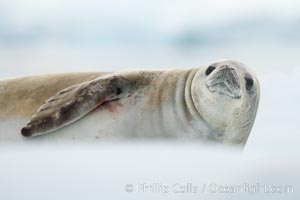
A crabeater seal, hauled out on pack ice to rest. Crabeater seals reach 2m and 200kg in size, with females being slightly larger than males. Crabeaters are the most abundant species of seal in the world, with as many as 75 million individuals. Despite its name, 80% the crabeater seal's diet consists of Antarctic krill. They have specially adapted teeth to strain the small krill from the water.
Species: Crabeater seal, Lobodon carcinophagus
Location: Neko Harbor, Antarctic Peninsula, Antarctica
Image ID: 25665
Species: Crabeater seal, Lobodon carcinophagus
Location: Neko Harbor, Antarctic Peninsula, Antarctica
Image ID: 25665
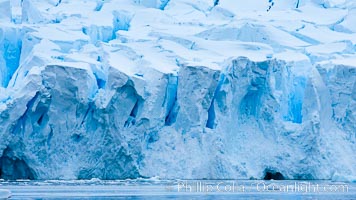
A glacier fractures and cracks, as the leading of a glacier fractures and cracks as it reaches the ocean. The pieces will float away to become icebergs.
Location: Neko Harbor, Antarctic Peninsula, Antarctica
Image ID: 25741
Location: Neko Harbor, Antarctic Peninsula, Antarctica
Image ID: 25741
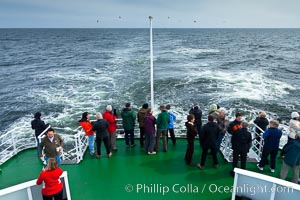
Birdwatching, on the stern deck of the ship M/V Polar Star. While en route between remote ocean islands such as the Falklands, South Georgia, South Orkneys and South Shetlands, seabirds often fly alongside the boat.
Location: Falkland Islands, United Kingdom
Image ID: 23711
Location: Falkland Islands, United Kingdom
Image ID: 23711
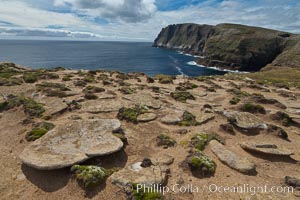
Interesting rock formations on plateau atop New Island, with sheer rugged seacliffs and the ocean beyond.
Location: New Island, Falkland Islands, United Kingdom
Image ID: 23798
Location: New Island, Falkland Islands, United Kingdom
Image ID: 23798
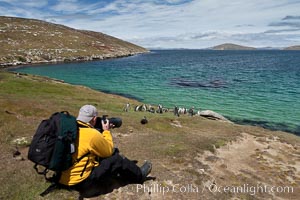
Photographer Al Bruton, photographing Magellanic penguins on grasslands above the ocean.
Species: Magellanic penguin, Spheniscus magellanicus
Location: New Island, Falkland Islands, United Kingdom
Image ID: 23799
Species: Magellanic penguin, Spheniscus magellanicus
Location: New Island, Falkland Islands, United Kingdom
Image ID: 23799
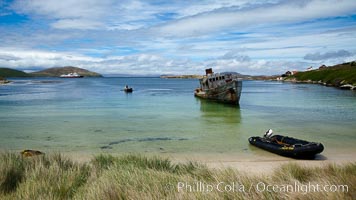
Sand beach at New Island Settlement, with zodiac ashore and shipwrreck.
Location: New Island, Falkland Islands, United Kingdom
Image ID: 23800
Location: New Island, Falkland Islands, United Kingdom
Image ID: 23800
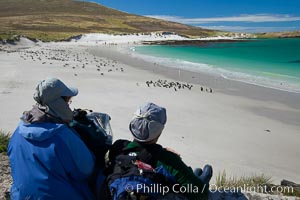
Visitors watch gentoo and Magellanic penguins on beautiful Leopard Beach, coming ashore after they have foraged at sea.
Species: Magellanic penguin, Spheniscus magellanicus
Location: Carcass Island, Falkland Islands, United Kingdom
Image ID: 23973
Species: Magellanic penguin, Spheniscus magellanicus
Location: Carcass Island, Falkland Islands, United Kingdom
Image ID: 23973
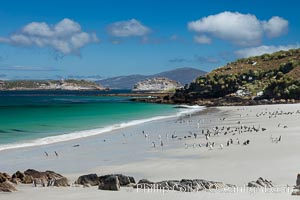
Beautiful white sand beach, on the southern tip of Carcass Island, with gentoo and Magellanic penguins coming and going to sea.
Species: Magellanic penguin, Spheniscus magellanicus
Location: Carcass Island, Falkland Islands, United Kingdom
Image ID: 23985
Species: Magellanic penguin, Spheniscus magellanicus
Location: Carcass Island, Falkland Islands, United Kingdom
Image ID: 23985
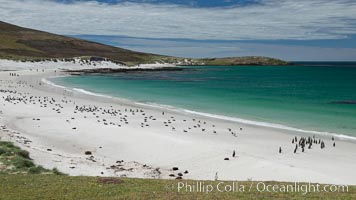
Beautiful white sand beach, on the southern tip of Carcass Island, with gentoo and Magellanic penguins coming and going to sea.
Species: Magellanic penguin, Spheniscus magellanicus
Location: Carcass Island, Falkland Islands, United Kingdom
Image ID: 24010
Species: Magellanic penguin, Spheniscus magellanicus
Location: Carcass Island, Falkland Islands, United Kingdom
Image ID: 24010